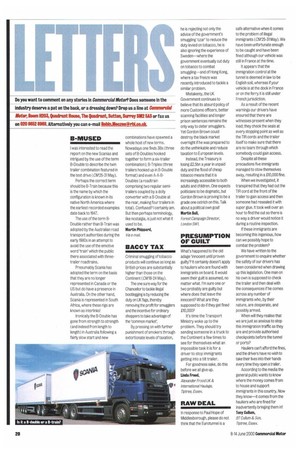B-MUSED
Page 22

If you've noticed an error in this article please click here to report it so we can fix it.
I was interested to read the report on the new Scanias and intrigued by the use of the term B-Double to describe the twin trailer combination featured in the test drive ( CM25-31 May).
Perhaps the correct term should be B-Train because this is the name by which the configuration is known in its native North America where the earliest recorded examples date back to 1947.
The use of the term BDouble rather than B-Train was adopted by the Australian road transport authorities during the early 1980s in an attempt to avoid the use of the emotive word 'train' which the public there associated with threetrailer roacttrains.
Presumably Scania has adopted the term on the basis that they are no longer represented in Canada or the US but do have a presence in Australia. On the other hand, Scania is represented in South Africa, where these rigs are known as interlinks!
Ironically the B-Double has gone from strength to strength (and indeed from length to length) in Australia following a fairly slow start and new combinations have spawned a whole host of new terms. Nowadays one Inds 3Bs (three sets of B-Doubles hooked together to form a six-trailer combination); B-Triples (three trailers hooked up in R-Double format) and even A-A-BDoubles (a roadtrain comprising two regular semitrailers coupled by a dolly converter with a B-Double at the rear, making four trailers in total). Confused? I certainly am. But then perhaps terminology, like nostalgia, is just not what it used to be.
Marlin Phippard, Via e-mail.












































































































